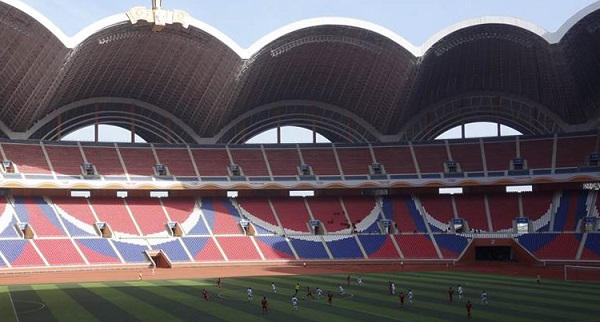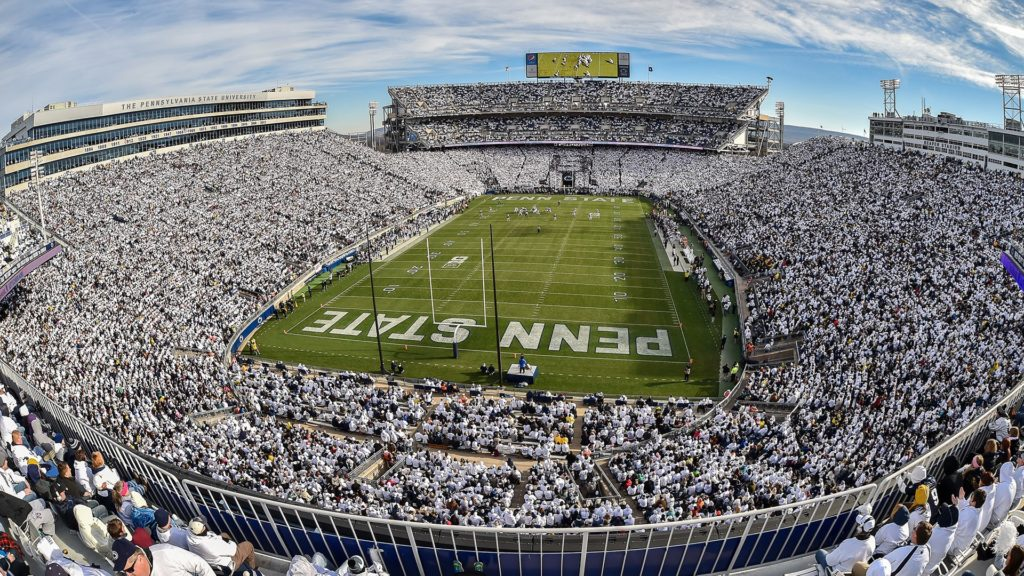The Grandeur of the World’s Largest Stadiums
In the realm of sports and entertainment, the sheer size and grandeur of a stadium can leave an indelible mark on the experience. These colossal structures are not just stages for athletic prowess but architectural marvels that captivate audiences with their awe-inspiring designs. From iconic football cathedrals to multi-purpose arenas, the world’s largest stadiums serve as testaments to human ingenuity and the insatiable desire for spectacle. In this article, we’ll embark on a journey through the top 12 largest stadiums across the globe, exploring their histories, unique features, and the unforgettable moments they have hosted.
Sports have always held a special place in the hearts of millions worldwide, transcending cultural boundaries and bringing people together in a shared passion. As the popularity of various sports grew, the need for larger and more grandiose venues became evident. Architects and engineers pushed the boundaries of design and construction, creating stadiums that not only accommodated vast crowds but also served as iconic landmarks in their respective cities.
These colossal structures are more than just venues; they are living, breathing entities that bear witness to the triumphs and heartbreaks of athletes, the roars of passionate fans, and the shared experiences that bind communities together. From the thunderous applause echoing through the stands to the intricate engineering feats that make these stadiums possible, each one represents a unique tapestry woven from history, culture, and human endeavor.
The Top 12 Largest Stadiums in the World
Rungrado 1st of May Stadium

Nestled in the heart of Pyongyang, North Korea, the Rungrado 1st of May Stadium stands as a true architectural marvel and a testament to the country’s ambitious vision. With a staggering capacity of 114,000 spectators, this multi-purpose stadium is the largest in the world by seating capacity. Completed in 1989, the stadium’s imposing design features a striking series of arches that create a distinctive silhouette against the Pyongyang skyline.
Beyond its sheer size, the Rungrado 1st of May Stadium is renowned for its iconic mass games, where thousands of performers engage in meticulously choreographed displays of gymnastics, dance, and multimedia presentations. These events have become a source of immense national pride and a unique cultural experience for the fortunate few who have witnessed them.
Sardar Patel Stadium

Located in the city of Ahmedabad, India, the Sardar Patel Stadium, also known as the Motera Stadium, is a true engineering marvel and a testament to India’s passion for cricket. With a capacity of 132,000 spectators, this stadium surpassed the iconic Melbourne Cricket Ground to become the largest cricket stadium in the world upon its completion in 2020.
The Sardar Patel Stadium boasts an impressive range of amenities, including state-of-the-art player facilities, media centers, and a dedicated clubhouse. Its design incorporates elements of sustainability, such as rainwater harvesting and solar power generation, making it an environmentally conscious venue. The stadium’s inaugural match, played between India and England in 2021, was a momentous occasion that solidified its place in cricketing history.
Salt Lake Stadium

Nestled in the heart of Kolkata, India, the Salt Lake Stadium is a revered venue that has witnessed some of the most iconic moments in Indian football history. With a capacity of 120,000 spectators, this vast stadium is a testament to the country’s unwavering passion for the beautiful game.
Completed in 1984, the Salt Lake Stadium has hosted numerous high-profile matches, including the prestigious FIFA World Cup qualifiers and the iconic Kolkata Derby between East Bengal and Mohun Bagan. Its distinctive design, featuring a series of towering floodlight pylons and a striking blue-and-white color scheme, has made it an instantly recognizable landmark in the city.
FNB Stadium

Situated in the vibrant city of Johannesburg, South Africa, the FNB Stadium, formerly known as the Soccer City Stadium, is a true icon of modern stadium design. With a capacity of 94,736 spectators, this multipurpose venue has played host to some of the most significant sporting events in recent history.
The FNB Stadium’s crowning moment came in 2010 when it served as the main venue for the FIFA World Cup, hosting both the opening and closing ceremonies, as well as the final match. Its iconic calabash-inspired design, a nod to traditional African pottery, has become a symbol of South Africa’s rich cultural heritage and a source of immense national pride.
Azteca Stadium

Located in Mexico City, the Azteca Stadium is a true colossus of the sports world, with a capacity of 87,523 spectators. This iconic venue has played a pivotal role in shaping the nation’s love for football, hosting numerous memorable matches and serving as the home ground for the Mexican national team.
Completed in 1966, the Azteca Stadium’s distinctive design features a striking circular shape and a unique cantilevered roof that provides excellent sight lines for every spectator. Its hallowed turf has witnessed some of the most iconic moments in football history, including the infamous “Hand of God” goal scored by Diego Maradona during the 1986 FIFA World Cup.
Wembley Stadium

Located in the heart of London, England, Wembley Stadium is a true icon of modern stadium design and a testament to the enduring passion for football in the United Kingdom. With a capacity of 90,000 spectators, this state-of-the-art venue has become synonymous with the biggest and most prestigious events in the world of sports and entertainment.
Completed in 2007, Wembley Stadium boasts an iconic arch-shaped roof that spans an impressive 315 meters, creating a striking silhouette against the London skyline. The stadium’s advanced design incorporates numerous amenities, including luxury suites, restaurants, and a comprehensive media center, ensuring a world-class experience for spectators and athletes alike.
Camp Nou

Situated in the vibrant city of Barcelona, Spain, Camp Nou is a revered temple of football that has played a pivotal role in shaping the legacy of the iconic FC Barcelona club. With a capacity of 99,354 spectators, this massive stadium is not only the largest in Europe but also one of the most recognized and beloved venues in the world of sports.
Completed in 1957, Camp Nou’s distinctive design features a striking blend of modern and traditional architectural elements, with its iconic façade and towering grandstands creating an unforgettable atmosphere. The stadium has witnessed countless historic moments, including the triumphs of legendary players like Lionel Messi and the unforgettable victories of the club’s world-renowned teams.
Melbourne Cricket Ground

The Melbourne Cricket Ground (MCG) is a true icon of Australian sports and a revered venue that has witnessed some of the most memorable moments in cricket and Australian rules football. With a capacity of 100,024 spectators, the MCG is not only the largest stadium in Australia but also one of the largest in the world.
Completed in 1853, the MCG has a rich history that spans over 150 years, making it one of the oldest and most iconic sporting venues in the world. Its distinctive design features a blend of modern and traditional elements, with towering grandstands and a striking array of amenities that ensure a world-class experience for spectators and athletes alike.
Rose Bowl Stadium

Located in the heart of Pasadena, California, the Rose Bowl Stadium is a true icon of American sports and a beloved venue that has played host to some of the most significant events in the nation’s history. With a capacity of 92,542 spectators, this iconic stadium is a true testament to the enduring passion for football and the grandeur of American sports.
Completed in 1922, the Rose Bowl Stadium has a rich history that spans nearly a century, making it one of the oldest and most revered venues in the United States. Its distinctive design features a striking blend of classic and modern architectural elements, with towering grandstands and a lush green field that has been the stage for countless unforgettable moments.
Beaver Stadium

Located in the picturesque college town of State College, Pennsylvania, Beaver Stadium is a true icon of American college football and a revered venue that has witnessed some of the most passionate and electrifying atmospheres in the world of sports. With a capacity of 106,572 spectators, this massive stadium is not only the second-largest in the Western Hemisphere but also a testament to the unwavering spirit of Penn State University’s dedicated fans.
Completed in 1960, Beaver Stadium’s distinctive design features a striking horseshoe shape and towering grandstands that create an unforgettable atmosphere for spectators and athletes alike. The stadium has played host to countless memorable moments, including the triumphs of legendary coaches and players who have left an indelible mark on the history of Penn State football.
Michigan Stadium

Nestled in the heart of Ann Arbor, Michigan, the Michigan Stadium, affectionately known as “The Big House,” is a true icon of American college football and a revered venue that has witnessed some of the most passionate and electrifying atmospheres in the world of sports. With a capacity of 107,601 spectators, this massive stadium is not only the largest in the United States but also a testament to the unwavering spirit of the University of Michigan’s dedicated fans.
Completed in 1927, the Michigan Stadium’s distinctive design features a striking bowl shape and towering grandstands that create an unforgettable atmosphere for spectators and athletes alike. The stadium has played host to countless memorable moments, including the triumphs of legendary coaches and players who have left an indelible mark on the history of Michigan football.
Narendra Modi Stadium

Located in the city of Ahmedabad, India, the Narendra Modi Stadium, formerly known as the Motera Stadium, is a true engineering marvel and a testament to India’s passion for cricket. With a staggering capacity of 132,000 spectators, this stadium surpassed the iconic Melbourne Cricket Ground to become the largest cricket stadium in the world upon its completion in 2020.
The Narendra Modi Stadium boasts an impressive range of amenities, including state-of-the-art player facilities, media centers, and a dedicated clubhouse. Its design incorporates elements of sustainability, such as rainwater harvesting and solar power generation, making it an environmentally conscious venue. The stadium’s inaugural match, played between India and England in 2021, was a momentous occasion that solidified its place in cricketing history.
Conclusion
The world’s largest stadiums are more than just mere venues; they are living, breathing entities that have witnessed countless moments of triumph, heartbreak, and unity. These colossal structures stand as testaments to human ingenuity, architectural prowess, and the enduring passion for sports and entertainment that transcends cultural boundaries.
From the iconic Camp Nou in Barcelona to the awe-inspiring Rungrado 1st of May Stadium in Pyongyang, each of these stadiums has etched its name in history, becoming synonymous with the spirit of their respective cities and nations. They have hosted some of the most memorable events in the world of sports, serving as stages for legendary athletes and unforgettable moments that have captivated audiences across the globe.
As we marvel at the grandeur of these stadiums, we are reminded of the power of human endeavor and the ability to create structures that not only defy the limits of engineering but also inspire generations to come. These venues are more than just places to watch games; they are living monuments to the enduring spirit of competition, camaraderie, and the shared experiences that bind us together as a global community.

